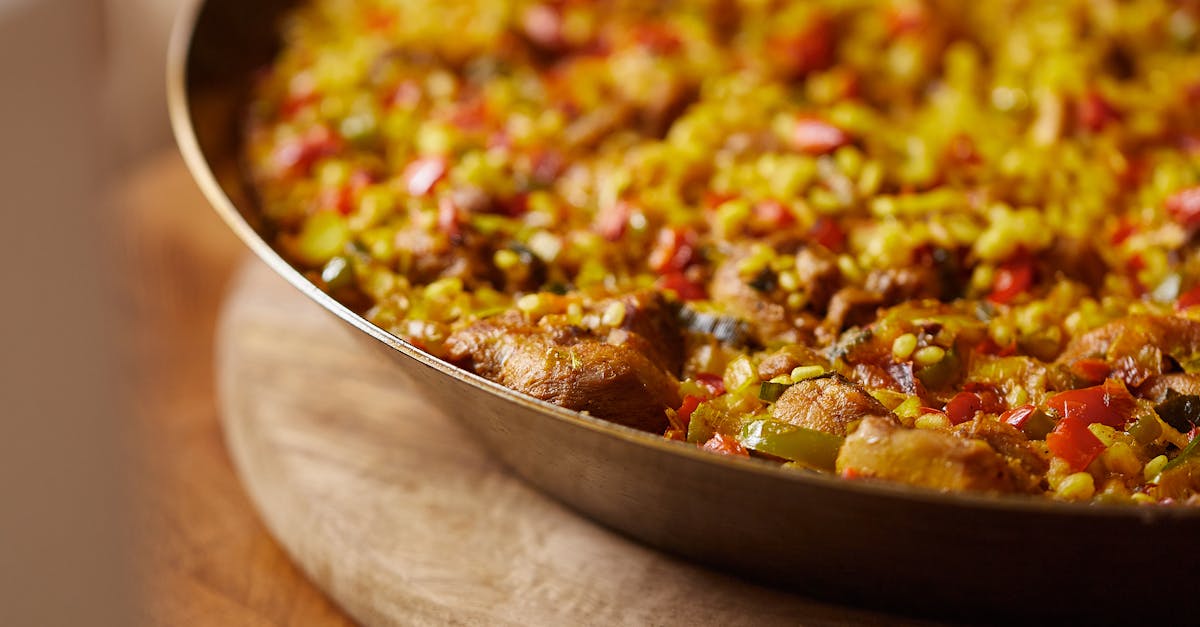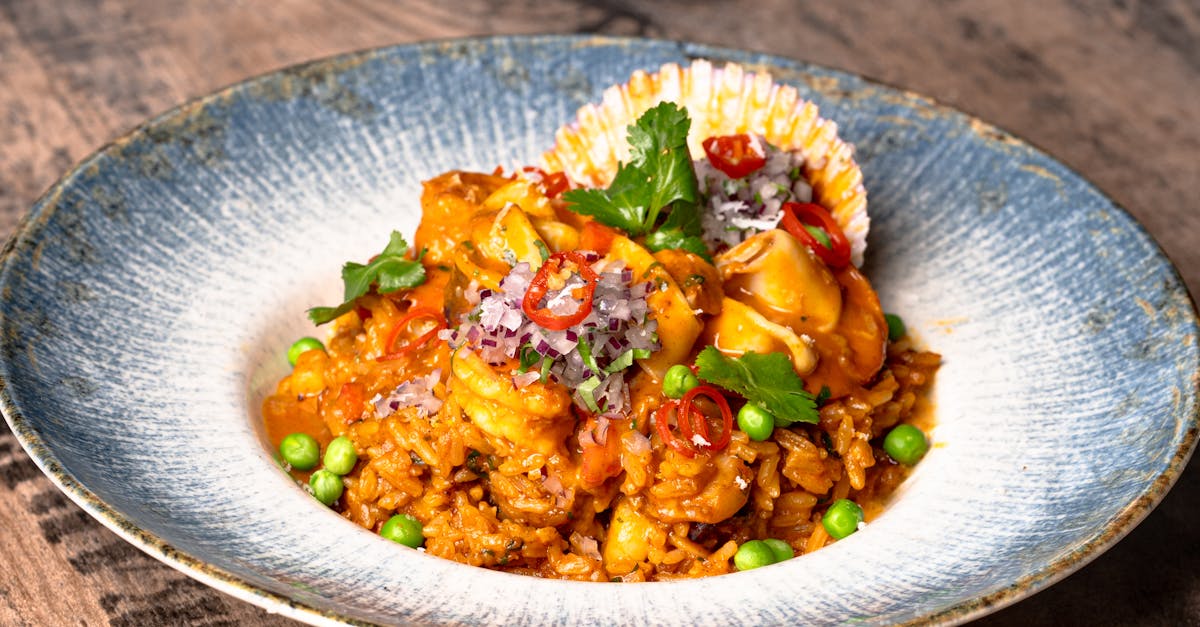Regional Spanish Cuisine
May 18, 2025

When it comes to the diverse and flavorful world of cuisine, few countries can rival the rich tapestry of flavors and ingredients found in Spanish cooking. Spanning across various regions, each with its own unique traditions and culinary specialties, the regional Spanish cuisine is a true reflection of the country's diverse landscapes, history, and cultural influences.
Universally recognized for its use of fresh and high-quality ingredients, Spanish cuisine is fundamentally rooted in simplicity and respect for the natural flavors of each component. Whether you find yourself indulging in the seafood-rich plates of Galicia in the north or savoring the aromatic spices of Andalusia in the south, one thing is for certain - a culinary journey through Spain is a feast for the senses.
At its core, regional Spanish cuisine is a celebration of local produce and time-honored recipes passed down through generations. From the hearty stews of Castilla y León to the vibrant paellas of Valencia, each dish tells a story of the people and the land from which it originates. The passion and dedication that go into preparing these traditional dishes are what make Spanish cuisine so beloved and revered worldwide.
Overall, what sets regional Spanish cuisine apart is its ability to showcase the incredible diversity of flavors and cooking techniques that can be found within a single country. From the lush greenery of the Basque Country to the sun-drenched fields of Extremadura, each region offers a unique gastronomic experience that is sure to leave a lasting impression on any food lover.
In essence, exploring the regional Spanish cuisine is not just about tasting delicious food - it's about embarking on a culinary adventure that will transport you to the heart and soul of this vibrant and passionate country. Join me as we dive into the savory world of regional Spanish cuisine and discover the true flavors of Spain.
Despite this wide variety of dishes, regional Spanish cuisine also has common threads that tie it all together. One such unifying factor is the emphasis on communal dining experiences where food serves as a means of bringing people together. Whether it's enjoying tapas with friends in a bustling bar in Madrid or partaking in a festive seafood feast during a local celebration in a coastal town, the act of sharing a meal is deeply ingrained in Spanish culinary traditions.
Another key point that defines regional Spanish cuisine is the influence of history and cultural exchange on its development. Centuries of invasions, trade routes, and migrations have left an indelible mark on the dishes found throughout the country. Moorish spices in Andalusian cuisine, Roman techniques in Catalan cooking, and even New World ingredients in traditional Spanish recipes all speak to the rich tapestry of influences that have shaped the gastronomic landscape of Spain.
Moreover, most compelling evidence of the importance of food in Spanish culture is evident in the meticulous attention to detail given to each preparation. Whether it's the intricate layering of flavors in a traditional Spanish omelet or the slow-roasting of a succulent Segovian suckling pig, the care and craftsmanship put into every dish truly sets Spanish cuisine apart.
In reality, regional Spanish cuisine is not just about sustenance; it's a way of life that honors tradition, community, and the joy of savoring each bite. By delving into the culinary heritage of Spain, we not only discover a world of tantalizing flavors but also gain a deeper understanding of the country's history and its people.

Exploring the flavors of spain: a culinary journey through Spain's regions
The amalgamation of various culinary influences in Spain has shaped a gastronomic landscape that is nothing short of extraordinary. Particularly, the Moorish presence in Spain from the 8th to the 15th century contributed significantly to the introduction of ingredients like almonds, saffron, and citrus fruits, which are now staples in Spanish cuisine. The Moorish influence in Andalusia is especially notable, seen in the use of spices like cumin and coriander in dishes like gazpacho and various types of stews.
Moreover, Spain's colonial history has left a lasting impact on its cuisine. For instance, the Spanish introduction of ingredients from the New World such as tomatoes, potatoes, and peppers transformed the culinary scene in Spain and beyond. A prime example being the creation of iconic dishes like patatas bravas and the famous Spanish omelet, which showcase the seamless integration of these formerly foreign ingredients into traditional Spanish recipes.
In like manner, the diverse climate and geography of Spain have led to regional variations in culinary practices. For instance, the salty air of coastal regions has given rise to exquisite seafood dishes, while the fertile plains of central Spain have fostered the production of world-renowned cured meats like Jamón Ibérico. This regional diversity ensures that every corner of Spain offers a unique and memorable dining experience for every palate.
Furthermore, the strong sense of community and tradition in Spanish culture is reflected in the way meals are prepared and enjoyed. Whether it's a simple family gathering or a festive celebration, food plays a central role in bringing people together and creating lasting memories. This communal aspect of dining underscores the deep-rooted connection between food, culture, and social bonds in Spain.
Exploring the culinary landscape of Spain is like taking a gustatory journey through history, culture, and tradition, where every bite tells a story of the past and present. From the foothills of the Pyrenees to the sandy shores of the Mediterranean, each region in Spain offers a culinary experience that is as diverse as it is delicious. The rich tapestry of flavors and ingredients found throughout Spain reflects a deep-rooted connection to the land, the sea, and the people who call this beautiful country home.
Traditional dishes like paella, gazpacho, and Jamón Ibérico are more than just food; they are a testament to the resilience and creativity of the Spanish people. The meticulous attention to detail, the emphasis on communal dining experiences, and the influence of centuries of cultural exchanges all come together to create a culinary landscape that is truly unparalleled. It is through food that we can truly understand the heart and soul of a country, and in the case of Spain, the flavors speak volumes.
So, as we conclude this culinary journey through Spain's regions, let us savor the memories of the diverse dishes, the vibrant colors, and the warm hospitality that characterize Spanish cuisine. From the bustling markets of Barcelona to the quaint taverns of Seville, the love for food unites Spaniards in a shared appreciation for the pleasures of the table. Let us raise a glass of Rioja and toast to the flavors of Spain, a true gastronomic treasure trove waiting to be discovered.
As a result, Spanish cuisine not only nourishes the body but also nourishes the soul, weaving together a tapestry of flavors, traditions, and stories that make it a truly unique and unforgettable culinary experience. So, if you ever find yourself in Spain, be sure to fully immerse yourself in the rich culinary heritage of this country, for it is an adventure that will tantalize your taste buds and leave you hungry for more. Let the flavors of Spain linger on your palate, and may each bite transport you back to the vibrant streets and sunny plazas of this extraordinary land.

Title
I'm a paragraph. Click here to add your own text and edit me. It's easy.

Title
I'm a paragraph. Click here to add your own text and edit me. It's easy.

Title
I'm a paragraph. Click here to add your own text and edit me. It's easy.


